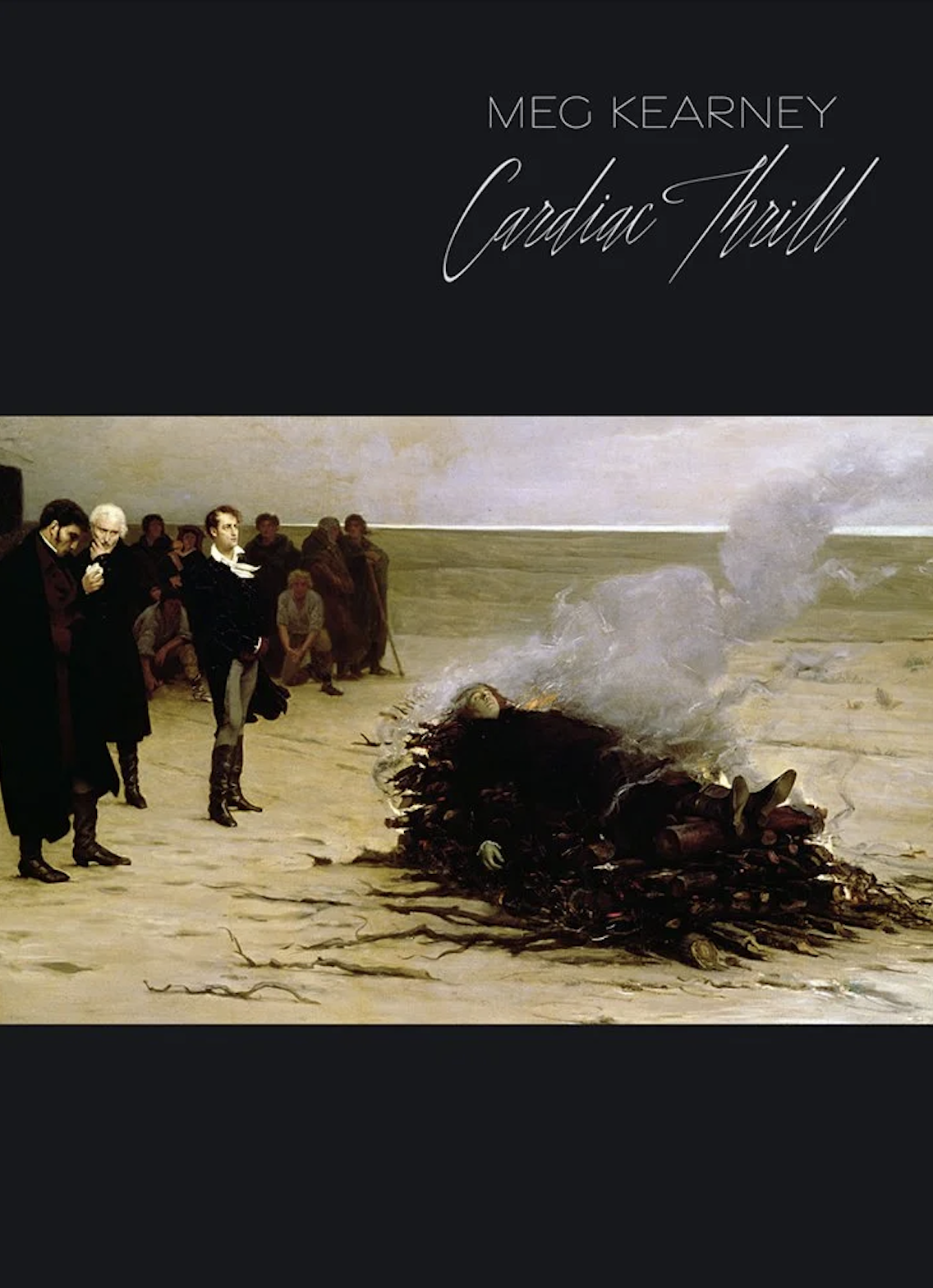“Magical, Mathematical, Intricate, and Seductive”: Carlene Gadapee’s review of CARDIAC THRILL by Meg Kearney
Cardiac Thrill
Meg Kearney
Green Linden Press, 2025
22 pp.
It’s been my pleasure to know Meg Kearney for a number of years—over twenty—and I’m always, in turn, surprised and delighted, then prodded into deep thought and filled with wonder when I read her work. It was through Meg that I learned what a heroic crown of sonnets is, how it operates, and what the challenges are that are present when writing such an intricate series of poems. That said, I’m happy to write about her most recent heroic crown, Cardiac Thrill, just out this fall from Green Linden Press.
The term “cardiac thrill” is a medical one, referring to a palpable vibration felt most often over the precordium (chest wall over the heart and overlapping the stomach), and it is often related to turbulent blood flow. It usually indicates an underlying disturbance, signaling possible heart disease. What Meg’s poems do, however, is something even more heart-felt: she tackles mortality head-on, with nods to Grandma and her father, the Pope, poets William Matthews and Percy Bysshe Shelley, Neruda and Yeats, among other notable figures. What do they –and we—have in common? We all have heart issues. Maybe not medical ones, per se, but we have loves and losses, worries and dreams.
This gorgeous collection of sixteen poems begins with a prelude, a lovely poem titled “Heart Quartet.” It begins in medias res, with a question: “And what emotional impulse leads you/ to speak of the heart….” What indeed? For the speaker of these poems, it is a real heart issue, the vibrations indicating the need for medical care. But there’s so much more to talking about the heart, things that we can all connect with. This is the genius of these poems and the poet herself.
A heroic crown of sonnets is a series of fifteen linked poems, with each poem after the first one starting with the last line of the one prior. The trickiest part is the final poem of the series, which is created from the first lines of all the preceding poems. It’s magical, mathematical, intricate, and seductive. Of course you can read one poem at a time, but why not just dive in? Each poem leads to the next, and we are carried along with the speaker of the poems, pondering life, love, and mysteries. In the third poem, “No One is Spared,” the speaker recounts what happened to Pope John Paul I, who, after a mere thirty-three days, died in his sleep, and “one day you’re whistling; next, your stone’s been carved.”
A couple of poems later, and we are given the where and how of poet Bill Matthews’ death, which shocked the poetry world and especially those close to him. He died while listening to opera, fully dressed and he “toppled straightening his bow tie”—he was relatively young, “just turned fifty-five.” But then, we move to a contemplation of Shelley, a British Romantic poet, whose “heart defied cremation, so it’s said.” What do these poets have in common? And how does the reader find a kinship with them, as well? These poems are an invitation to that line of thinking. And so we move from one little window after another into heart-things that are even more personal, such as the heart attack of the speaker’s father, who “swore/ he’d rather die than not live as he chose.” And in the poem “Born With,” we find out that the speaker, who is, of course, a version of Meg herself, was “born with a murmur” and “like a flute [she] had a hole in her heart.”
The narrative continues, and we come to a poem titled “My Ex’s Heart Was a Teakettle.” The controlling conceit of this poem is perfect, and it captures the complexity of a relationship that appeared to be “a bit romantic” but “I should have known/ his whistle would turn to scream and then groan/ as it died.” Metaphors do a lot of work, and this poem exemplifies how perfect one can be when the subject matter is both difficult and personal. The use of a perfect metaphor helps us both connect to the subject matter and leads us into the heart of the matter, as well.
The last poem is both clever and poignant, capturing the tenor of the crown, but it also serves as a love-letter to the heart. Yes, the heart is often surprised and surprising, maybe even shocking, but it’s always there—until it’s not. Meg closes this last sonnet with “Be still, my heart.” This collection is an elegy to all things of the heart: people, places, experiences, memories, the Self. Meg, as poet-speaker, is kind, smart, compassionate and passionate. This heroic crown is a beautiful paean to her craft, her loves, and the readers who embrace her art.
Note: Meg Kearney’s The Ice Storm, also a heroic crown of sonnets, is also available from Green Linden Press.
Poet and teacher Carlene M. Gadapee lives in northern New Hampshire with her husband, several fruit trees, and a beehive. She holds two Masters’ Degrees (MEd and MA-LS). She can be found on Facebook as Carlene M Gadapee, on Instagram at @carlenegadapee, and on BlueSky at @carlenemgadapee. Carlene M. Gadapee’s chapbook, What to Keep (Finishing Line Press, 2025), joins her poems and book reviews in many journals including Allium, Smoky Quartz, Touchstone, Gyroscope Review, Vox Populi, and MicroLit.


